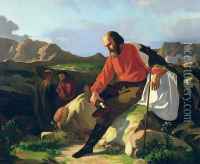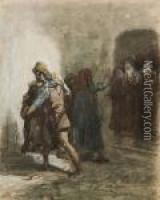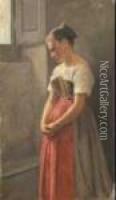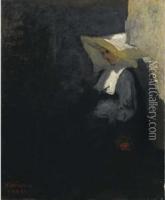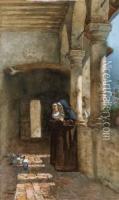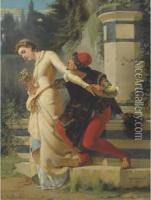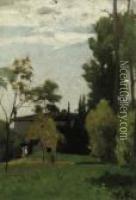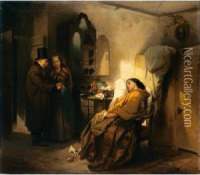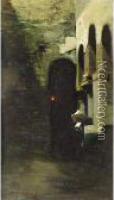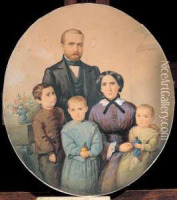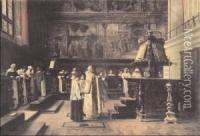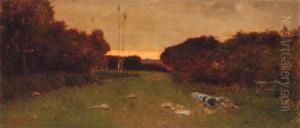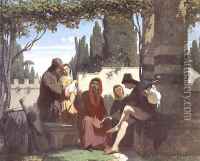Vincenzo Cabianca Paintings
Vincenzo Cabianca was an Italian painter associated with the Macchiaioli group, who were forerunners of the Impressionist movement. Born on February 21, 1827, in Verona, Italy, Cabianca initially studied at the Accademia di Belle Arti in Venice before moving to Rome in 1853. In Rome, he became friends with a group of Tuscan artists who later would be recognized as the Macchiaioli, including Giovanni Fattori, Silvestro Lega, and Telemaco Signorini. The Macchiaioli rejected traditional Italian art teachings of the time, focusing instead on painting outdoors (en plein air) to capture natural light, shade, and color.
Cabianca's work often depicted everyday scenes, landscapes, and historical themes with a focus on the effects of light and atmosphere. His style was characterized by the use of 'macchie' or patches of color, which is where the group's name derives from. In the 1860s, he participated in several exhibitions with the Macchiaioli and gained recognition for his work.
Throughout his career, Cabianca remained somewhat detached from the main group of Macchiaioli, developing his own distinctive approach. He was particularly interested in the interplay of light and shadow and often employed a cooler palette than his peers. After spending a significant period in Rome, he returned to Florence, where he continued to paint and exhibit his work.
Cabianca was also an influential teacher, sharing his knowledge and techniques with younger artists. Despite his connections to the progressive Macchiaioli, his work retained a classical quality, distinguishing him from some of the more radical members of the group.
Vincenzo Cabianca died on March 21, 1902, in Rome. Although he is not as widely known today as some of his contemporaries, his contributions to the development of Italian painting in the 19th century are significant. His work is held in various Italian museums and continues to be studied by art historians interested in the Macchiaioli movement and the evolution of modern art.
